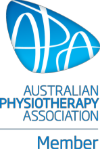Case Study: Atraumatic Shoulder Instability
Introduction:
John* is a 33-year-old carpenter who came to The Shoulder Joint with eight-year history of ‘on and off’ right shoulder pain that was affecting his work and gym.
Patient Presentation:
John cannot remember what caused his shoulder pain. He mainly gets pain at the back of his shoulder but also sometimes around the clavicle. He describes this pain as 4/10 severity and feels it most when is working with his arm is in front of him or doing heavy pushing exercises at the gym. He has not had any trauma to his shoulder previously but has always done heavy work including many years as a brick layer. His previous attempts to improve his pain through rest and then strengthening exercises have not significantly helped.
Examination Findings:
Examination showed John had atraumatic posterior shoulder instability that could be palpated when he lifted his arms in front. Painful cuff and bicep loading tests were improved with correction of humeral head position (limiting instability).
John was also found to have a stiff and tender AC joint (joint connecting collar bone to shoulder blade) and poor scapula muscle patterning.
Diagnosis and Treatment Plan:
John’s clinical diagnosis was Grade 1, Type II posterior glenohumeral instability (acquired ‘extra mobility’ of humeral head towards the back of the glenoid without subluxation). AC joint stiffness secondary to heavy gym and work history as well as scapula dyskinesis (changes to normal shoulder muscle patterns) were contributing to rotator cuff overload and persistent pain.
The treatment plan focused on improving the conditions for cuff tendon healing through improved shoulder joint stability and contribution surrounding structures including AC joint. An initial treatment period of manual treatment and neuromuscular retraining would progress to independent home exercises and a return to full gym program.
Intervention:
Manual treatment to mobilise John’s stiff AC joint gave him immediate improvements in his shoulder mobility, notably with cross-body movements. After three mobilisation sessions this improvement was sustained.
John was started on the Watson Instability Program, an evidence-based, neuromuscular retraining program designed for atraumatic shoulder instability. This program required specific, high-quality movement retraining that initially needed feedback and correction by physiotherapist. After 8 weeks John was able to continue this program independently showing good muscle pattern improvement.
Gym loading was initially reduced to allow muscle pattern retraining to be effective. Gym was then gradually re-introduced after two months when clinical testing showed improvements in neuromuscular control and humeral head position on loading.
Outcome and Results:
Three months after starting physio at The Shoulder Joint, John described his pain as 1/10 with minimal awareness at work. He had also been able to return to heavy pushing exercises in the gym without aggravation. Clinic testing showed he had full power on cuff testing and demonstrated improving muscle patterns in all testing positions.
John continued independently with the neuromuscular retraining exercises forming part of his new pre-gym warm-up routine.
Discussion and Conclusion:
shoulder instability is uncontrolled and symptomatic ‘extra’ mobility in the glenohumeral joint. Atraumatic instability can be caused by repeated microtrauma through heavy or end-of-range repetitive work or sporting activity.
improving the function of surrounding structures such as the AC joint can help to unload painful tissue and improve shoulder instability.
when considering persistent shoulder pain in a young and healthy shoulder the presence of atraumatic shoulder instability needs to be assessed for
improving the function of an unstable shoulder requires specific, evidence-based rehabilitation with initial focus on neuromuscular retraining before strength exercises can commence.
*Note: Name and identifying details have been changed
If you have more questions regarding shoulders instability injuries please feel free to contact us at theshoulderjoint@outlook.com. If you would like to be assessed by one of our expert shoulder physiotherapists you can book an appointment here. Your physiotherapist will be able to provide a detailed clinical diagnosis and treatment plan and assist with organising appropriate shoulder investigations as required.


